Dog crates have many purposes. They should be a safe space that your pet loves, providing them a quiet place to settle if they want or need to be left alone. They can also provide a safe way to confine your pup for travel, after surgery, or to rest due to an injury.
As important as crates are, it’s equally as important to ensure that your dog’s crate correctly accommodates their size. To walk us through the importance of a correctly sized crate and how to measure your dog for a crate, we talked to behavior specialist Lauren Novack, ACDBC, KPA-CTP, FPPE, from Behavior Vets NYC.

What Size Crate Do I Need for My Dog?
“Each dog should have their own crate that is big enough for them to stand up, turn around, and lie down comfortably,” says Novack, who is also a member of the Daily Paws Advisory Board. “Puppies should not have enough space to pee in one corner and curl up in another corner.” A crate should be cozy, but also limit their access to the environment.
What could happen if your dog’s crate is too big? “If the crate is too big, your pup may have accidents or instead of being on crate rest, spend their time standing instead of lying down and healing,” Novack says.
If your dog’s crate is too small, they will be cramped. “That’s not fair,” Novack says. “It should be a place they love and want to be in when it’s time to rest.”
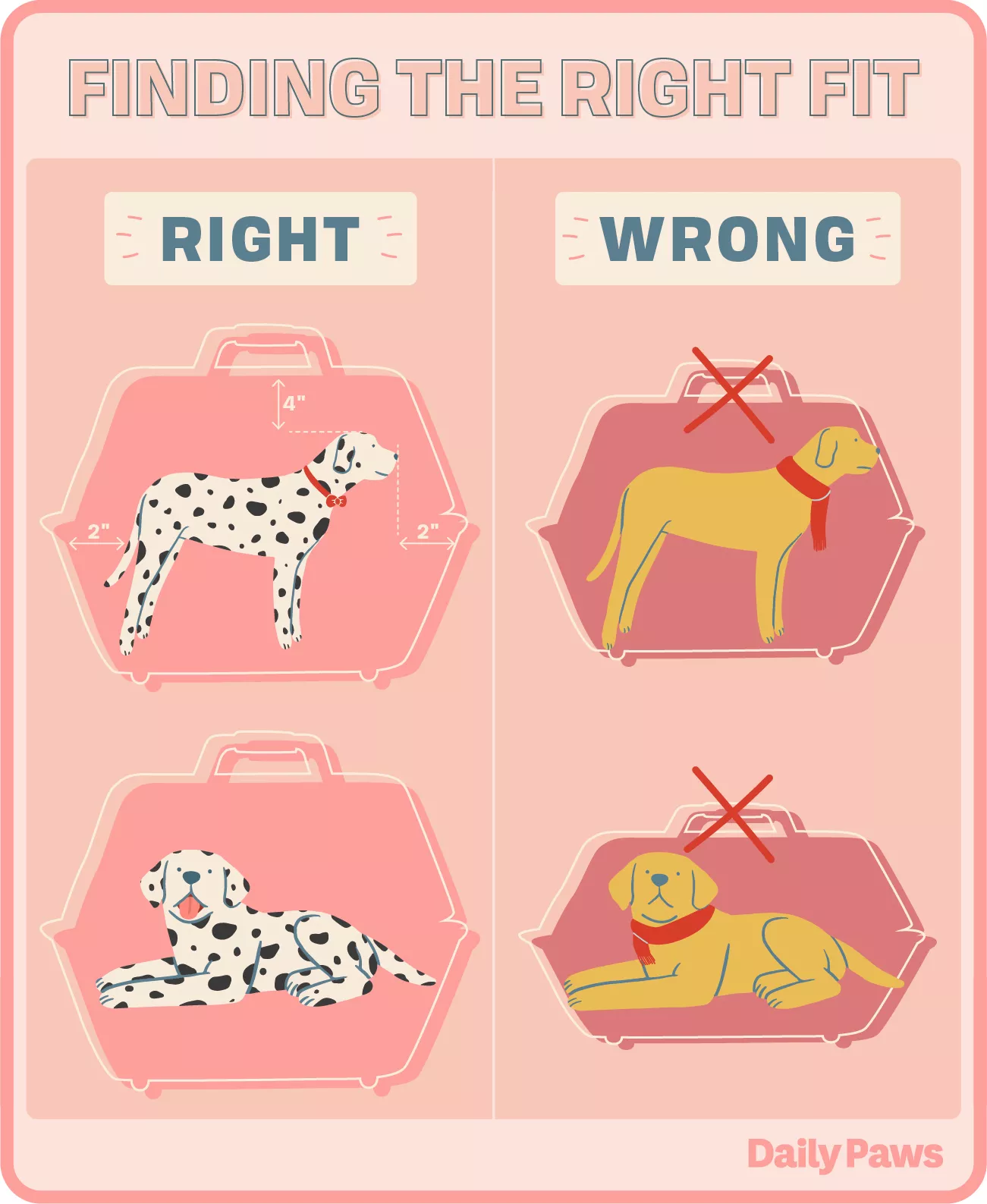
Also consider whether your dog will get bigger. Although puppies need a smaller space right now, they’ll need more room as they grow. If growing is in your dog’s future, purchase a larger crate with divider panels. Dividers can be adjusted as your puppy grows into the crate.
How to Measure Your Dog for a Crate the Right Way
Novack suggests that in a properly sized crate, your pup should be able to lie down on their side. Therefore, to match your dog’s measurements to a crate’s dimensions, you’ll need to measure the length and height of your dog.
For their length, measure from your dog’s nose to tail. When measuring the tail, add approximately 2-4 inches to the overall length, depending on their size. For their height, measure from the top of your dog’s head to the ground. If your dog has naturally erect ears, measure from the tip of their ears.
Once you have these measurements, add 4 inches to the length and height to determine the correct crate size.
Dog Crate Size Guide
Now that you understand how to measure your dog for a crate, this chart shows general dimensions and breeds to reference when selecting a dog crate.
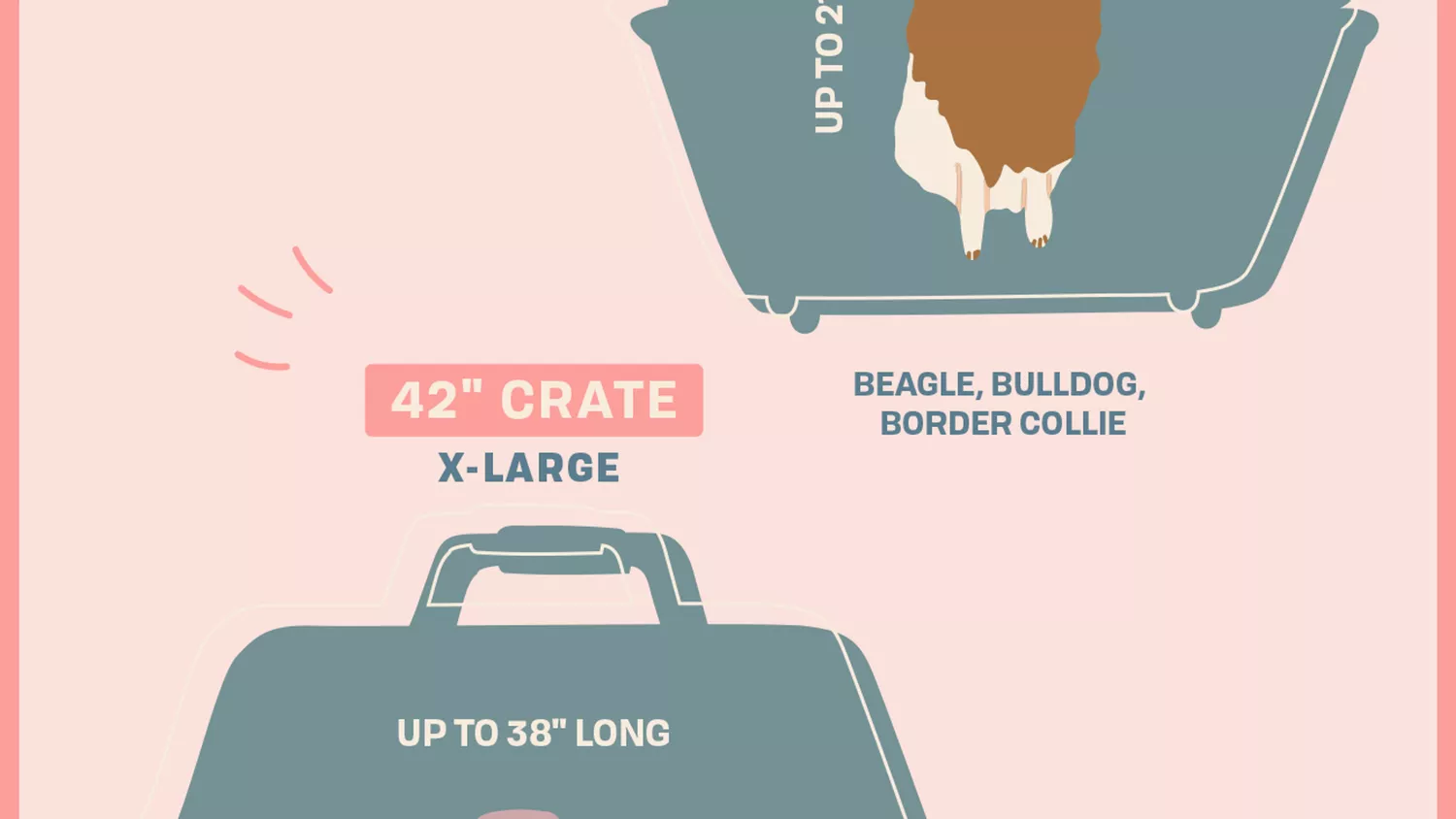
5 Types of Dog Crates to Choose From
Once you’ve measured your pup and determined what size crate they need, it’s time to shop for the perfect crate for your individual dog. Here are some of our favorite options to choose from.
Wire Dog Crate

Wire crates are the most basic type of dog crate. The sturdy metal structures allow a dog to see their surroundings and receive steady airflow. Wire crates are a good choice for most dogs, including puppies and dogs who are being housetrained.
Furniture-Style Dog Crate
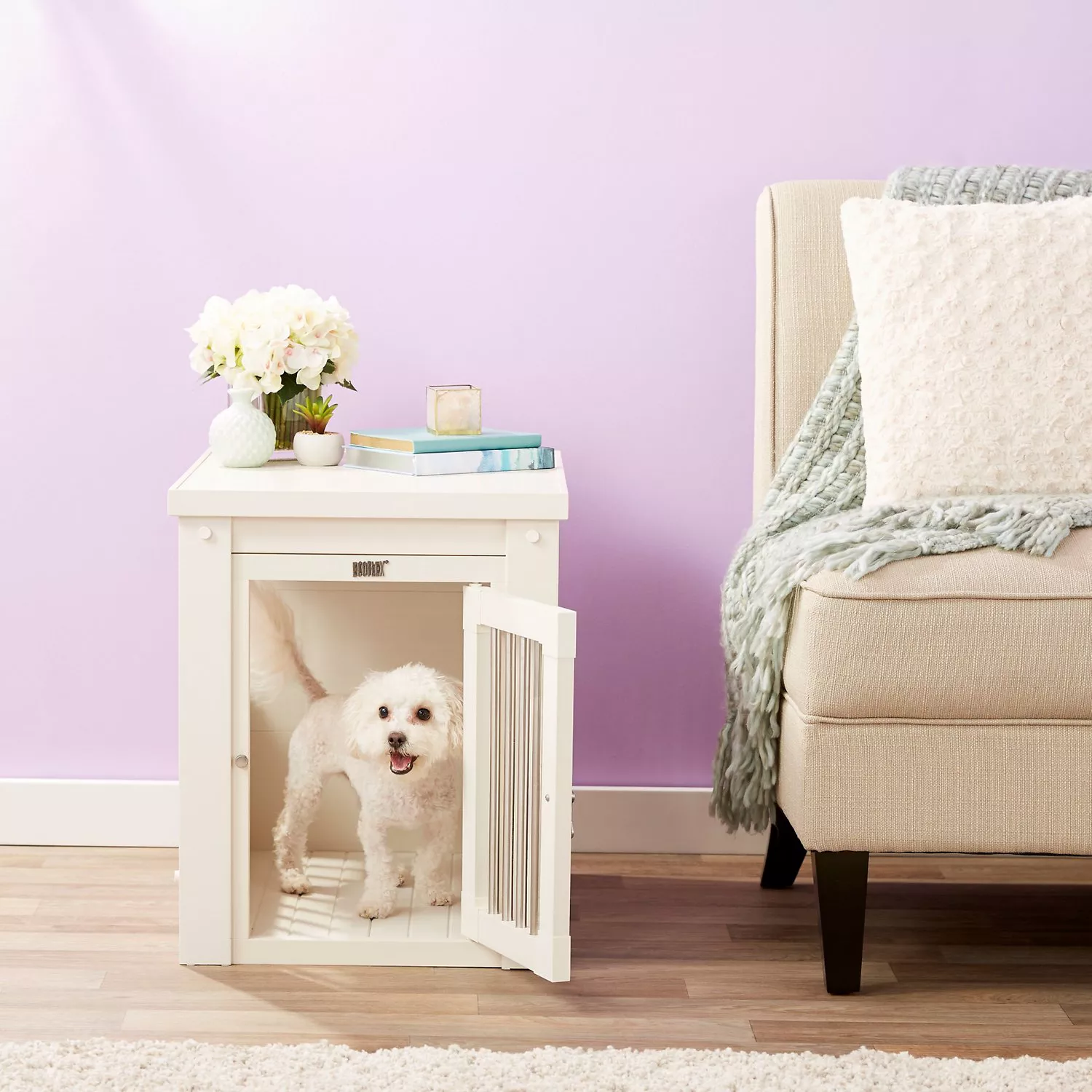
If you don’t like the industrial look of a wire dog crate, pick a furniture-style dog crate that blends into your other home decor. Furniture-style dog crates can double as an end or side table, so they’re perfect for pet parents who don’t have extra space for a crate. Furniture-style dog crates are ideal for smaller dog breeds.
Soft-Sided Dog Crate
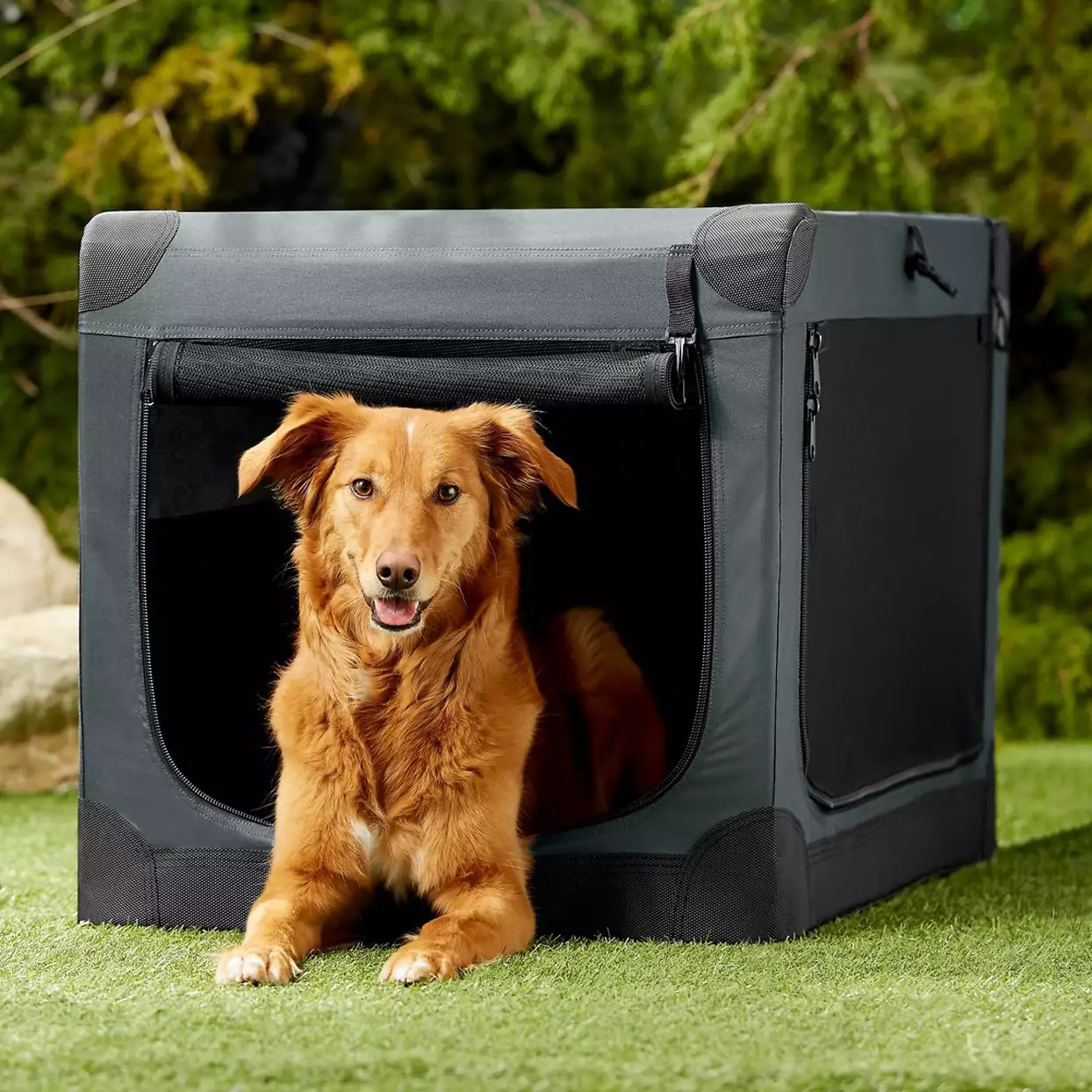
Soft-sided dog crates are a lightweight option for pet parents who want a crate they can easily move and even bring along on a road trip. Many have multiple zippered doors to keep your pet accessible and allow for convenient placement in your home, car, or wherever the day takes you.
Plastic Dog Crate
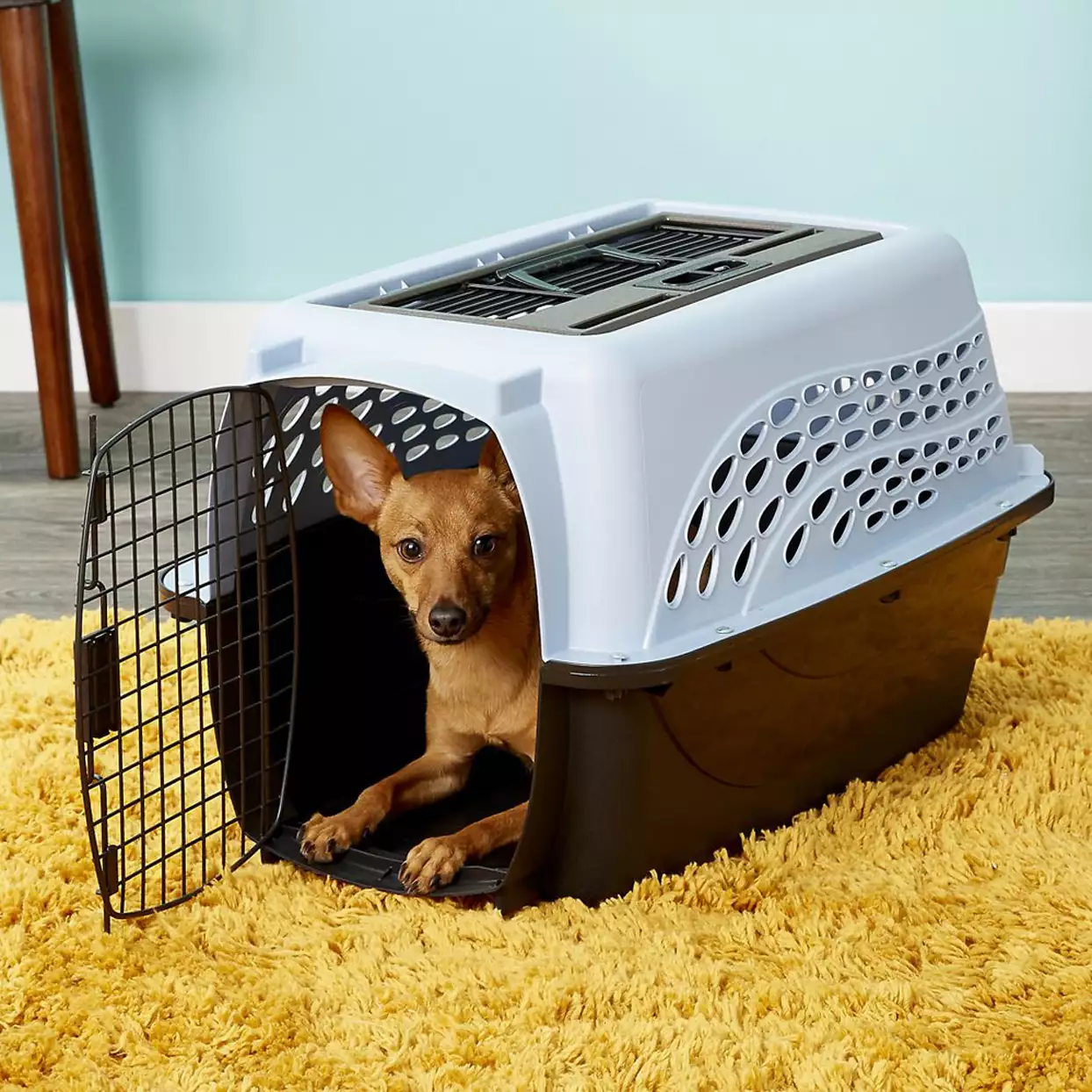
If your pup is an enthusiastic chewer, a plastic dog crate may be more practical for carrying your dog outside of the house. Heavy duty plastic can even hold up against puppies during their teething phase. A plastic crate is also easier to spray down if your dog happens to have an accident inside.
Travel Dog Crate
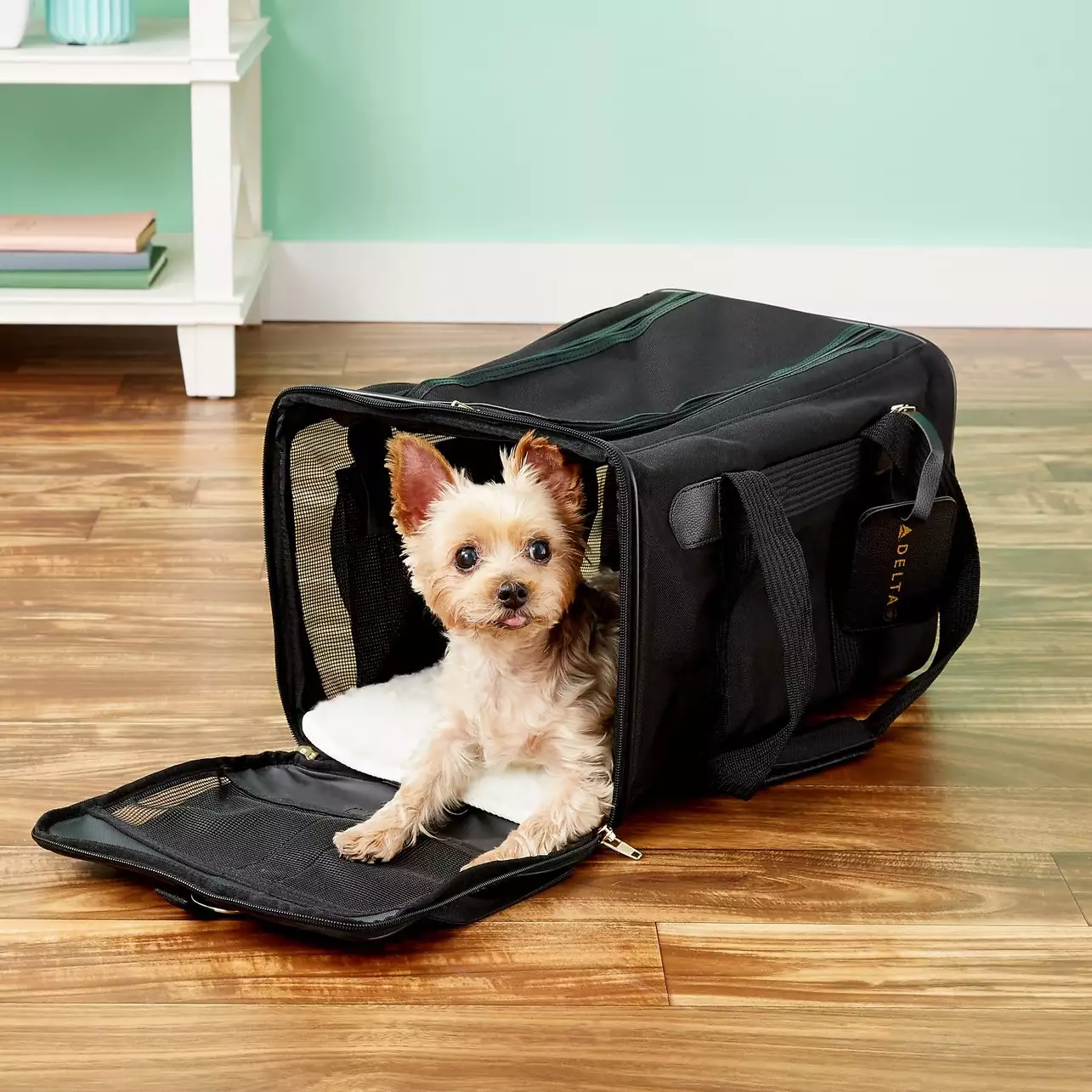
Anytime you’re bringing your dog on a flight, you’ll need to ditch the bulky crate and instead opt for a smaller carrier specifically designed for flying. Most airlines allow small- or medium-sized dogs to ride with you in the cabin as long as they’re carried in an airline-approved carrier. Make sure to check the regulations with your specific airline.



